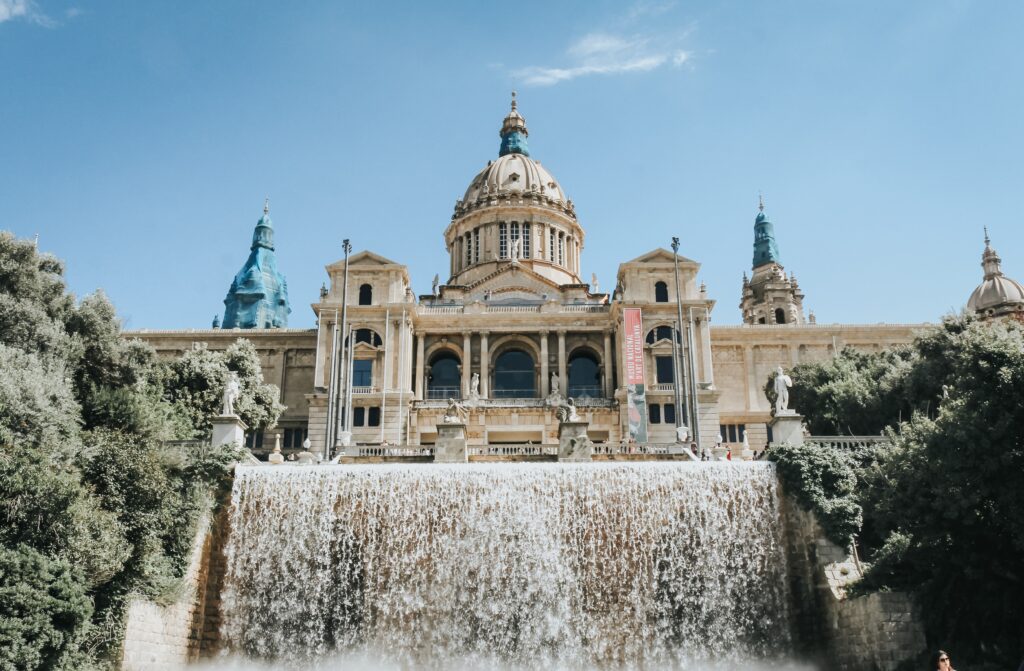Museu Nacional d’art De Catalunya and Barcelona Cathedral Tickets
4 min read
Last Updated on June 11, 2023 by Jonathan Lopez
Museu Nacional d’art De Catalunya Tickets
The Museu Nacional d’Art de Catalunya (MNAC) is the national museum of Catalan visual art and houses one of the largest collections of Romanesque art in the world. It is situat on the slopes of Montjuc, right off Plaça Espanya.
The MNAC is house in the Palau Nacional de Montjuic, or National Palace of Montjuc, which built for the 1929 Barcelona International Exposition. Over 32,000 square metres in size, the palace was design in the era’s academic classicism and Spanish Renaissance styles. The building dominates the scene as seen from Plaça Espanya and is a well-known tourist destination in and of itself.
The Museum of Modern Art of Barcelona displays modern art from the middle of the 20th century on (MACBA). Visit the museum to see the world’s best collection of Romanesque mural paintings as well as works
the most prominent Catalan Modernists, like Gaud and Casas. By purchasing the Museu Nacional d’Art de Catalunya tickets, you can see Gothic art, famous European Renaissance and Baroque painters like Titian or Velázquez, and the collection of photographs.
Visit : thecouponly
With works dating from roughly 1000 AD to the start of the Gothic era in the 13th century, the MNAC collection is home to what is thought to be the biggest collection of Romanesque art in the entire world. It has an extraordinary collection of Catalan Romanesque paintings, sculptures, panel paintings, and wood carvings, many of which formerly shown in rural Catalan churches.
TO Keep
The museum comprises collections of Gothic, Baroque, and Renaissance artwork in addition to its Romanesque art; it also has a modern art collection that originated at the Barcelona Universal Exhibition of 1888. The earliest pieces in this collection of modern art date to the 1940s.
The Romanesque collection is one of the most significant in the museum and contains a number of significant Romanesque murals. No other museum in the world can compare to the Museu Nacional Romanesque Collection. Many of the pieces, which originally adorned rural churches in the Pyrenees and other locations in Old Catalonia, or Catalunya Vella in Catalan, date to the 11th to the 13th century.
The Barcelona City Council exhibited a small collection of modern art that was then contemporary (for the time) at the Palau de Belles Arts for the 1888 Universal Exhibition,
which is where the Museu Nacional d’Art de Catalunya’s modern art collection got its start. The Council’s purchases at art exhibitions significantly increased the collection’s basic core. The best Catalan artwork from the early 19th century to the 1940s is currently available in the modern art collection.
Barcelona Cathedral Tickets
The light of the Christian faith had to soon brought to Barcelona. There were Christians in Barcelona at least towards the end of the third century and in the first few decades of the fourth,
According to the martyrdoms of Saint Eulàlia and Saint Cugat during the persecution of Diocletian and Maximin.
The cathedral in Barcelona features three naves but just one ambulatory, or girola. The ships are divide into five sections, with the section closest to the facade being longer than the other three to allow for the size of the dome rising behind the front door.
The secondary chapels that open toward the interior of the Cathedral and surround the entire basilica are made possible by the typical Catalan Gothic architectural structure,
which was designed to make use of the interior spaces of the buttresses. There are two secondary chapels for each section of the naves.
The two huge bell towers, one over the Sant Lu doorway and the other over the inner door of access to the cloister, rise on the ends of the part near the presbytery that is devoid of side chapels. These towers are octagonal and are join to a prismatic body for scale (1386-1393 and 16th century).
De Catalunya Tickets
The presbytery is well-lit by the large windows that are open above the mouths of the girola’s radial chapels. A tall gallery with open windows stretches along the basilica’s outer wall above the chapels, in the side aisles. The presbytery and central nave are surround by a tiny triforium, which runs along the vault.
The cathedral’s interior measures 79 meters long and 25 meters wide, not including the chapels on either side. The entrances to the chapels are each 9 meters high, 5 meters wide, and around 6 meters deep. The lateral ships are 6 meters wide and 21 meters high, and the pillars,
standing straight up to the beginning of the arches, are 15 meters high. The center nave is 13 meters wide and 26 meters high.
The chapels of the Cathedral have Gothic altarpieces created by Guerau Gener, Lulus Borrassà,
Gabriel Alemany, and Bernat Martorell, among others. Gothic artwork by artists like Pere Destorrents, Jaume Huguet, or La Pietat author Bartolomé Bermejo is preserved in the Cathedral Museum book Barcelona cathedral tickets for more live experience.
Read More : Element Vape Coupon Code
Final
There are many Gothic and contemporary stained glass windows in the Cathedral. They all adhere to the same design pattern of three streets, with the central
street bearing the holder’s likeness and the lateral streets bearing geometric decorations that frame regal coats of arms, city coats of arms, angels, etc., as well as a trilobed crown.
There are four segments to the stained glass eras: The first comprises all of the stained glass windows of the header, on the radial chapels, and is dated to the years 1317–1334 by the coat of arms of Bishop Ponç de Gualba that can be found in the windows of Santa Creu and Santa Eulàlia






